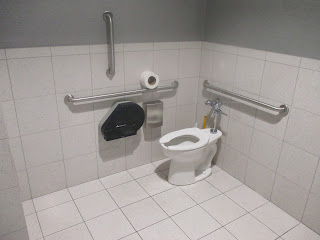Curb ramps are important to transportation
By Allison Donald
During the monthly MATA board meeting Gary Rosenfeld informed the board that MATA had been awarded $222,000 grant to repair and install new curb ramps. More community access is a significant development for people with disabilities who would like to ride the fixed route instead of using the expensive paratransit service. MATA has not set a timetable for the start or completion of the curb-ramp project.
“Why is MATA responsible for paying for curb ramps?” Charles Vergos board chair asked. “I thought it was the responsibility of the city to fix those things.”
Title II of the Americans with Disabilities Act (ADA) requires that state and local governments must provide curb ramps at pedestrian crossings and at public transportation stops where walkways intersect a curb. Each curb ramp must meet specific ADA standards for width, slope, cross slope, placement and other features. Curb ramps are a small but important part of making sidewalks, street crossings, and the other pedestrian routes that make up the public right-of-way accessible to people with disabilities.
Curb ramps have a specific relationship to paratransit. If a Memphis resident does not have an accessible route to their nearest bus stop, or there is not a curb ramp to make an accessible path to their destination, they cannot use the bus system like other Memphis citizens. The more expensive to operate paratransit system, MATAplus, is designed to provide “curb-to-curb” service where the fixed-route is not accessible. People with disabilities are only eligible for paratransit where they are functionally unable to use the fixed-route because of a disability.
While MATA is not responsible for curb-ramps in Memphis, the grant for curb-ramps can be a big savings for the transportation provider. If accessible routes can help just 50 people regularly ride the fixed-route instead of paratransit, we estimate that over a year, the curb ramps would pay for themselves.
A paratransit ride costs nearly $30, but MATA only recovers $3.50 per trip. The fixed-route is much less and we conservatively estimate that each paratransit trip costs about $20 more. Over the course of a year, about 220 trips, MATA would save $4,400 per rider. In a single year, 50 riders who forgo paratransit would be a savings equal to the grant for curb ramps.
Curb ramps are essential to enable people with mobility impairments to go to work, to access government buildings, to participate in recreational activities, to shop, and generally to allow individuals to travel freely through their communities. A correctly designed and constructed ADA curb ramp will enable a person with a disability to safely cross a street and to board and exit public transportation. People who use wheelchairs are not the only beneficiaries of curb ramps. Anyone for whom ambulation is difficult or painful, such as arthritis, also benefit from curb ramps as well as bikes, strollers and hand carts.
Curb ramps also provide a safe pathway for people with disabilities to travel without being in the direct line of traffic. If the sidewalk on either side of the street ends without a curb ramp, it is often difficult or impossible for an individual using a wheelchair, scooter, walker or other mobility device to cross the street. This is a dangerous situation where the person may have to travel alongside cars and other vehicles in the streets putting their personal safety at risk.
If you would like to attend the next MATA board meeting it will be Thursday July 26, 2018 at 3:30pm at 1370 Levee Road.




